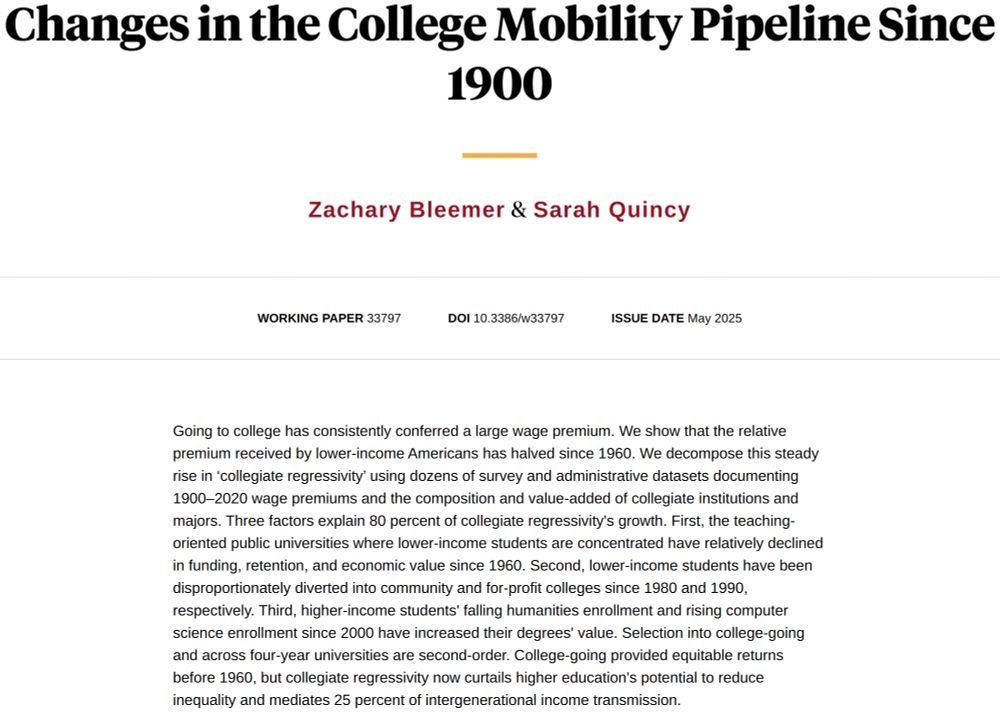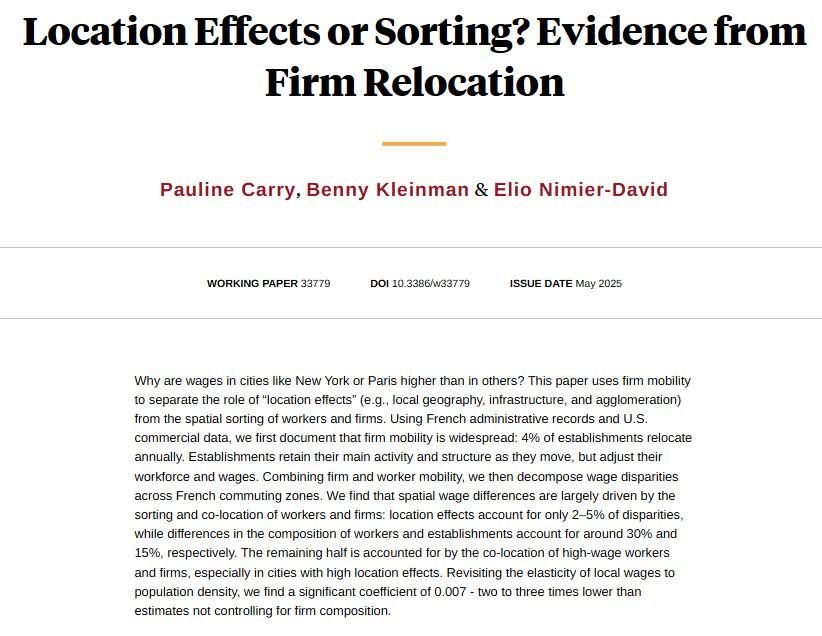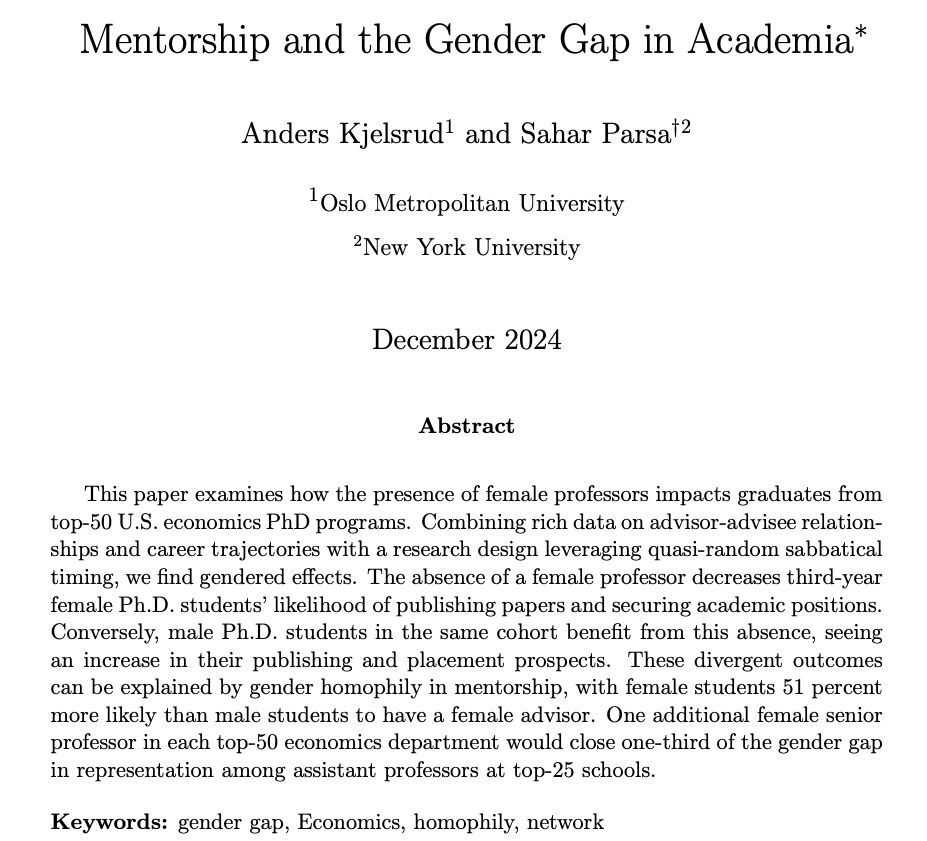Zach Bleemer
@zbleemer.bsky.social
330 followers
4 following
31 posts
Assistant Professor of Economics at Princeton and NBER | Education and Economic Mobility
Posts
Media
Videos
Starter Packs
Pinned
Reposted by Zach Bleemer
Robert Kelchen
@robertkelchen.com
· May 19

Changes in the College Mobility Pipeline Since 1900
Founded in 1920, the NBER is a private, non-profit, non-partisan organization dedicated to conducting economic research and to disseminating research findings among academics, public policy makers, an...
www.nber.org
Zach Bleemer
@zbleemer.bsky.social
· Jun 7
Reposted by Zach Bleemer
Florencia Torche
@ftorche.bsky.social
· May 19

Changes in the College Mobility Pipeline Since 1900
Founded in 1920, the NBER is a private, non-profit, non-partisan organization dedicated to conducting economic research and to disseminating research findings among academics, public policy makers, an...
www.nber.org
Zach Bleemer
@zbleemer.bsky.social
· May 19
Zach Bleemer
@zbleemer.bsky.social
· May 19
Zach Bleemer
@zbleemer.bsky.social
· May 19

Zachary Bleemer on X: "**New paper** Over the past 20 years (but not before!), Black and Hispanic college graduates have been steadily earning degrees in relatively lower-paying majors. The main culprit? An increasingly-common public university policy. A thread. #EconTwitter https://t.co/FgvmSoIsqe https://t.co/t8yzRaQMY4" / X
**New paper** Over the past 20 years (but not before!), Black and Hispanic college graduates have been steadily earning degrees in relatively lower-paying majors. The main culprit? An increasingly-common public university policy. A thread. #EconTwitter https://t.co/FgvmSoIsqe https://t.co/t8yzRaQMY4
x.com
Reposted by Zach Bleemer
Reposted by Zach Bleemer
Jesse Rothstein
@jrothst.bsky.social
· Apr 9
Reposted by Zach Bleemer















